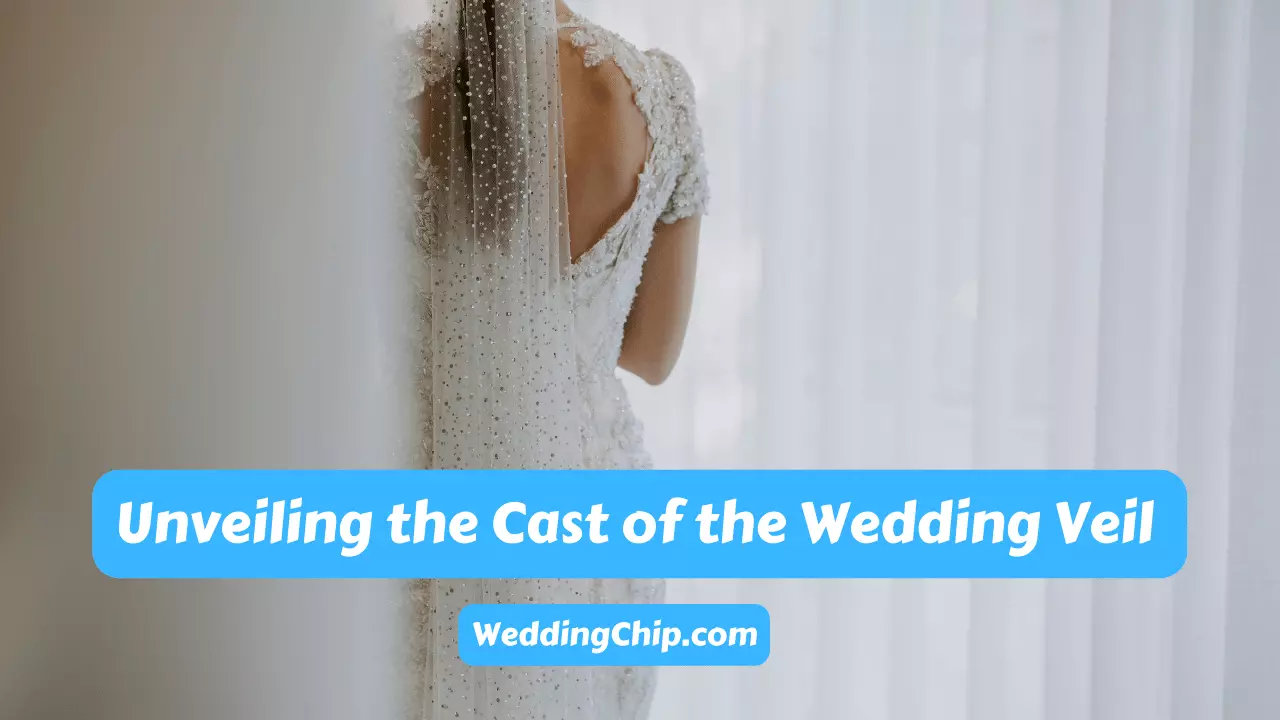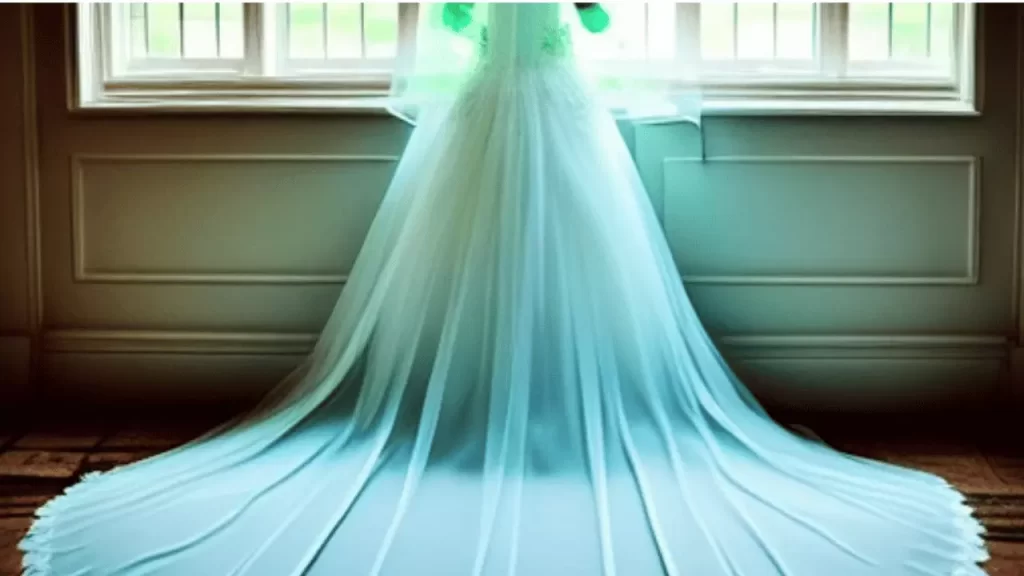
The wedding veil is a powerful symbol of the bride’s purity and modesty, deeply ingrained in the ceremony – a beautiful tradition!
Introduction
The wedding veil is a traditional bridal accessory worn by brides for centuries. It is a sheer fabric covering the bride’s face and head during the wedding ceremony. The veil can be made of different materials, such as tulle, lace, or silk, and comes in various lengths and styles.
Brief History of the Wedding Veil
The history of the wedding veil can be traced back to ancient Rome, where brides wore a red veil to symbolize their love and purity. In medieval times, the wedding veil symbolized the bride’s virginity and modesty and was meant to protect her from evil spirits. In the Victorian era, the wedding veil became a fashion statement, with the length and style of the veil reflecting the bride’s social status.
Significance of the Wedding Veil in Modern Times
The wedding veil has taken on new meanings and significance in modern times. It is still a symbol of the bride’s purity and modesty, but it can also be seen as a fashion accessory that adds to the bride’s overall look. The veil can complement the bride’s wedding dress and add a touch of elegance and sophistication to her bridal ensemble.
Overview of the Cast of the Wedding Veil
The cast of the wedding veil includes the bride, her maid of honor, bridesmaids, flower girls, the mother of the bride, and other members of the wedding party. Each wedding party member can wear a different type of veil, depending on their role and the wedding style. For example, the bride’s veil is typically longer and more elaborate than the veils worn by the bridesmaids or flower girls.
In summary, the wedding veil is a traditional bridal accessory with a rich history and special significance in modern times. It is worn by the bride and other members of the wedding party and can be used to add a touch of elegance and sophistication to the wedding ceremony.
Cast of the Wedding Veil
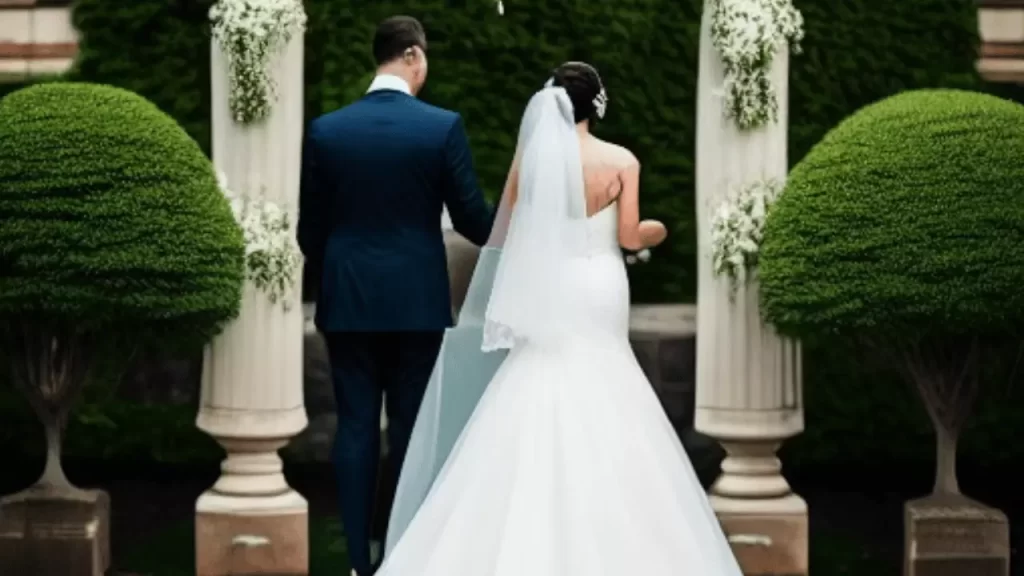
Maid of Honor (MOH)
The Maid of Honor (MOH) is an essential bridal party member and plays a crucial role in the wedding ceremony. Her primary responsibility is supporting the bride throughout the wedding planning process and on the wedding day. The MOH also has specific duties during the veiling ceremony.
Role of the Maid of Honor in the Wedding Ceremony
During the veiling ceremony, the MOH is responsible for holding the bride’s veil in place and adjusting it as necessary. She is also responsible for removing the cover after the ceremony, a symbolic gesture representing the bride’s transition into married life.
MOH’s Responsibilities in the Veiling Ceremony
Different types of veils are suitable for the MOH, depending on the style and formality of the wedding. A traditional blanket is made of tulle or lace and is usually longer than the MOH’s dress. A shorter birdcage veil covers only part of the face and is often worn with vintage or retro-style dresses. A blusher veil is a shorter veil that covers the front and is often worn with a longer veil for a more dramatic effect.
Types of Veils Suitable for the MOH
When styling the MOH’s veil, it is essential to consider the style and formality of the wedding. A traditional veil can be paired with a classic updo or a half-up, half-down hairstyle. A birdcage veil can be worn with a retro-style hairstyle or a chic bob. A blusher veil can be paired with a romantic updo or a soft, loose hairstyle.
In summary, the Maid of Honor plays a crucial role in the wedding ceremony and supports the bride throughout the wedding planning process. During the veiling ceremony, she is responsible for holding the bride’s veil in place and removing it afterward. Different types of veils are suitable for the MOH, and it is crucial to consider the style and formality of the wedding when styling the MOH’s veil.
Bridesmaids
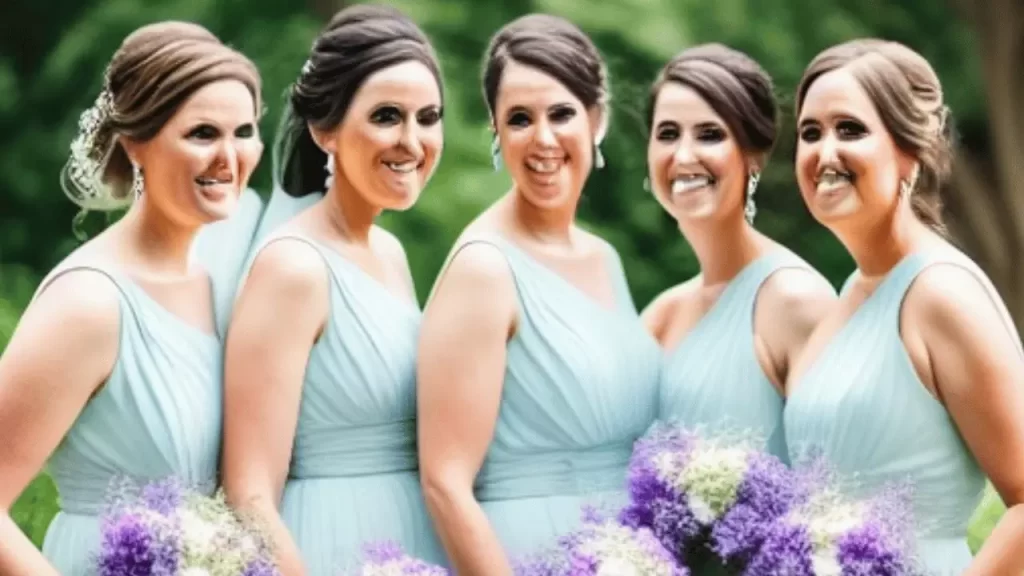
Bridesmaids are an essential part of the bridal party and play a crucial role in the wedding ceremony. Their primary function is to support the bride, help her with wedding planning, and stand by her side on her big day.
Roles of Bridesmaids in the Wedding Ceremony
During the veiling ceremony, bridesmaids have essential responsibilities. They are responsible for helping the MOH adjust the bride’s veil, hold it in place, and remove the cover after the ceremony. They also play an essential role in the pre-wedding celebrations, such as the bachelorette party and bridal shower.
Types of Veils Suitable for Bridesmaids
Different types of veils are suitable for bridesmaids, depending on the style and formality of the wedding. A traditional veil is a classic choice and can be made of tulle, lace, or other sheer fabrics. A shorter birdcage veil covers only part of the face and can be an excellent option for a more modern or informal wedding. A flower crown veil is a unique and bohemian option that can add a touch of nature and whimsy to the wedding party.
How to Style Bridesmaids’ Veils
When styling bridesmaids’ veils, it is vital to consider the style and color of their dresses and the overall theme and vibe of the wedding. A traditional veil can be paired with an elegant updo or a soft, romantic hairstyle. A birdcage veil can be worn with a retro-style or chic, modern dress. A flower crown veil can be paired with loose, beachy waves or a boho braid.
In summary, bridesmaids play a crucial role in the wedding ceremony and are responsible for supporting the bride and helping with wedding planning. During the veiling ceremony, they are responsible for helping with the bride’s veil and removing it afterward. Different types of veils are suitable for bridesmaids, and it is crucial to consider the style and formality of the wedding when styling their veils.
Flower Girls
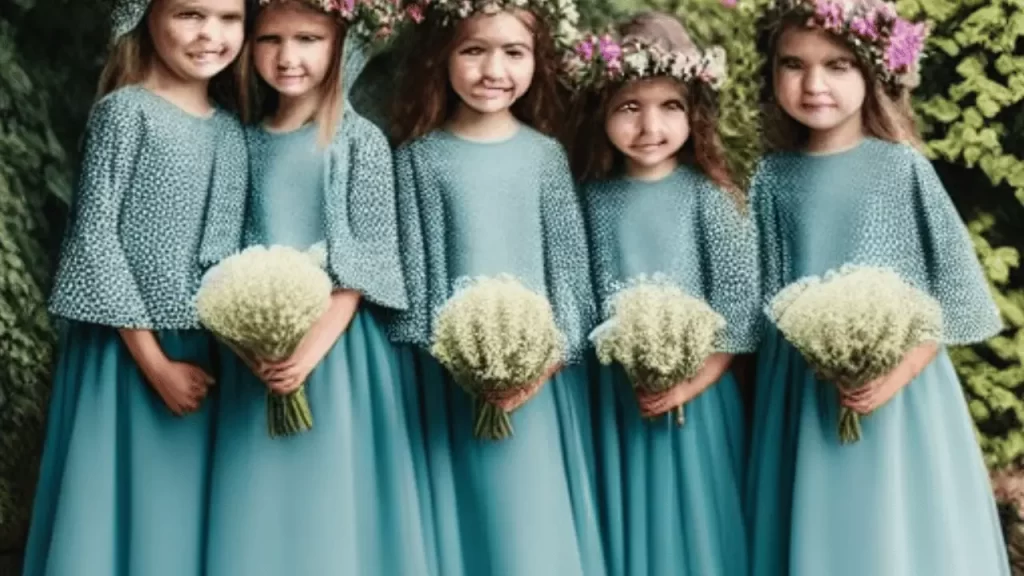
Flower girls are an adorable addition to any wedding ceremony and play a unique role on the wedding day. Their primary function is to walk down the aisle ahead of the bride, scattering petals or flowers and creating a beautiful atmosphere.
Role of Flower Girls in the Wedding Ceremony
During the veiling ceremony, flower girls do not have a specific role regarding the veil. However, they can still be included in the pre-wedding festivities and preparations, such as the bridal shower or flower crown making. They can also add a special touch to the wedding by wearing a veil.
Flower Girls’ Responsibilities in the Veiling Ceremony
Different types of veils are suitable for flower girls, depending on the style and formality of the wedding. A traditional veil can be made of tulle, lace, or other sheer fabrics and can be paired with a beautiful dress or flower crown. A halo veil is a unique and ethereal option that is perfect for a boho or garden wedding. A ribbon veil is a simple and sweet option that can add a touch of color to the flower girl’s outfit.
Types of Veils Suitable for Flower Girls
When styling flower girls’ veils, it is vital to consider the wedding’s overall theme and color scheme. A traditional veil can be paired with a beautiful dress, ballet flats, or sandals. A halo veil can be paired with loose, beachy waves or a simple braided hairstyle. A ribbon veil can be paired with a colorful sash or belt and simple, natural makeup.
In summary, flower girls play a unique role in the wedding ceremony by creating a beautiful atmosphere and walking down the aisle ahead of the bride. Although they do not have a specific role in the veiling ceremony, they can still wear a veil. Different types of veils are suitable for flower girls, and it is crucial to consider the wedding’s overall theme and color scheme when styling them.
Mother of the Bride
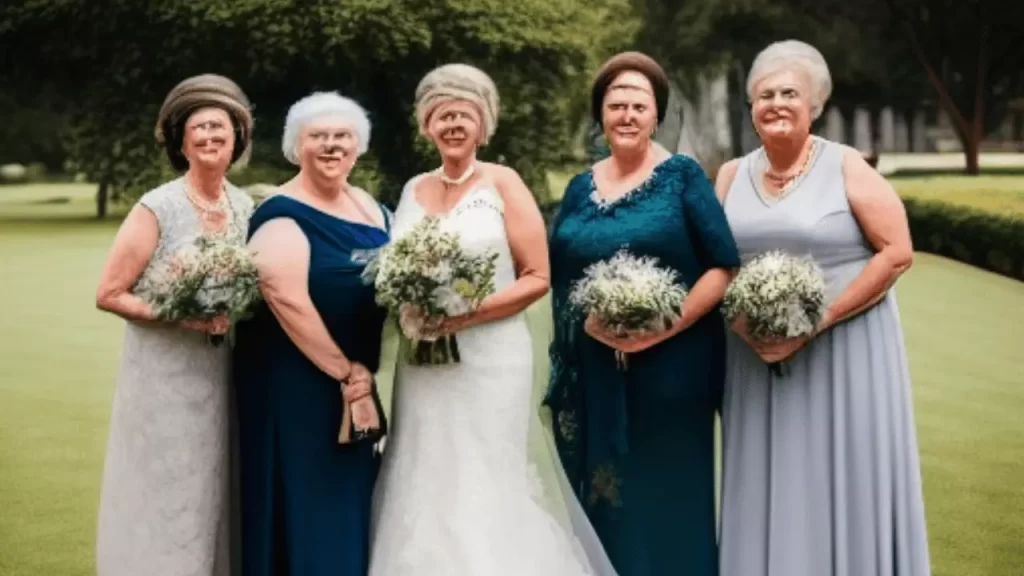
The bride’s mother is an essential member of the bridal party and plays a unique role in the wedding ceremony. Her role is to support and assist the bride throughout the wedding planning process and on the big day.
Role of the Mother of the Bride in the Wedding Ceremony
During the veiling ceremony, the bride’s mother does not have a specific role in the veil. However, she can still be involved in the pre-wedding festivities and preparations, such as helping the bride choose her veil or attending the bridal shower. She can also wear a unique veil to add a touch of elegance and style to the wedding.
Mother of the Bride’s Responsibilities in the Veiling Ceremony
Different types of veils are suitable for the bride’s mother, depending on the style and formality of the wedding. A traditional veil is a classic choice and can be made of tulle, lace, or other sheer fabrics. A mantilla veil is a Spanish-inspired option that is perfect for a formal wedding or a wedding with a Spanish theme. A Juliet cap veil is a vintage-inspired option that is perfect for a wedding with a piece of classical or romantic music.
Types of Veils Suitable for the Mother of the Bride
When styling the mother of the bride’s veil, it is vital to consider the overall style and color scheme of the wedding. A traditional veil can be paired with an elegant updo or a soft, romantic hairstyle. A mantilla veil can be worn with a simple, chic hairstyle and statement earrings. A Juliet cap veil can be paired with a vintage-inspired or a modern dress with romantic details.
In summary, the bride’s mother plays an essential role in the wedding ceremony by supporting and assisting the bride throughout the wedding planning process and on the big day. Although she does not have a specific role in the veiling ceremony, she can still wear a unique veil to add a touch of elegance and style to the wedding. Different types of veils are suitable for the bride’s mother, and it is crucial to consider the wedding’s overall style and color scheme when styling her veil.
Other Members of the Wedding Party
Aside from the main members of the wedding party, there are other individuals who play important roles in the wedding ceremony. These include the groom’s attendants, the fathers of the bride and groom, the officiant, and the ring bearer.
The Groom’s Attendants
The groom’s attendants, also known as groomsmen, are typically close friends or family members who support the groom on his wedding day. They are responsible for helping the groom get ready, organizing the bachelor party, and standing by the groom’s side during the ceremony. While they do not have a specific role in the veiling ceremony, they can still be involved in pre-wedding preparations and celebrations.
The Father of the Bride
The father of the bride plays an important role in the wedding ceremony by walking the bride down the aisle and giving her away to the groom. He may also give a speech or toast during the reception. The father of the bride does not have a specific role in the veiling ceremony, but he can still be involved in pre-wedding preparations and celebrations.
The Father of the Groom
Similarly, the father of the groom does not have a specific role in the veiling ceremony, but he can still be involved in pre-wedding preparations and celebrations. He may also give a speech or toast during the reception.
The Officiant
The officiant is the person who conducts the wedding ceremony and leads the couple through their vows. They may be a religious leader, a judge, or a civil servant. The officiant does not have a specific role in the veiling ceremony, but they are responsible for guiding the couple through the entire wedding ceremony.
The Ring Bearer
The ring bearer is a young boy who carries the wedding rings down the aisle. He is typically a close family member or friend of the couple. The ring bearer does not have a specific role in the veiling ceremony, but he adds a cute and charming touch to the wedding procession.
In summary, there are several other members of the wedding party who play important roles in the wedding ceremony. These include the groom’s attendants, the fathers of the bride and groom, the officiant, and the ring bearer. While they do not have specific roles in the veiling ceremony, they can still be involved in pre-wedding preparations and celebrations to make the wedding day a special and memorable event.
FAQs
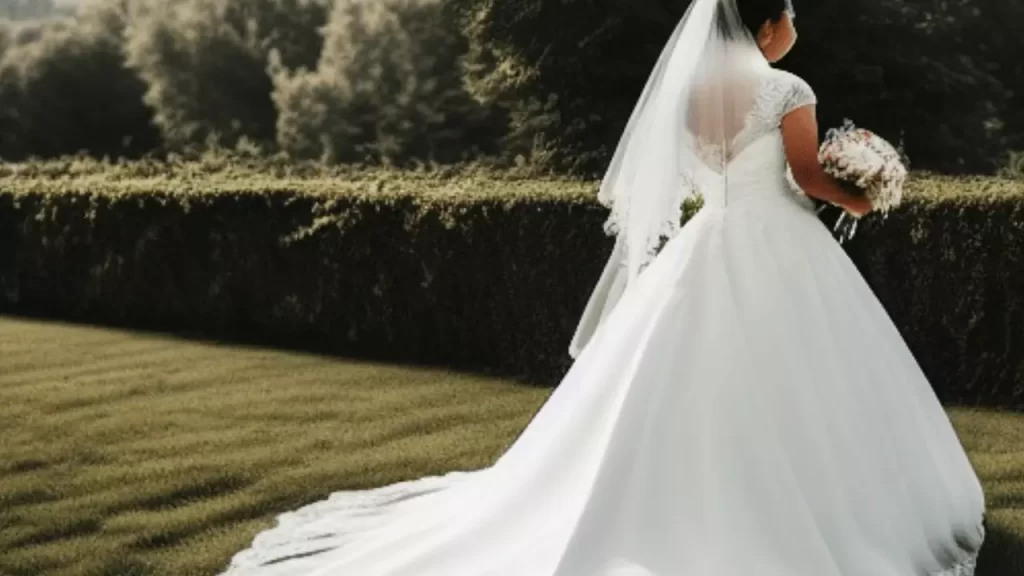
What is the significance of the Wedding Veil?
The wedding veil has a long history and holds great significance in many cultures. It is traditionally worn by the bride during the wedding ceremony and is seen as a symbol of purity, modesty, and reverence. The veil is also said to represent the transition from one stage of life to another, as the bride moves from being a single woman to a wife.
What is the history behind the Wedding Veil tradition?
The history of the wedding veil dates back to ancient Rome, where brides wore veils to protect themselves from evil spirits. In medieval times, the veil became a symbol of purity and innocence and was worn by brides as a sign of their modesty. The tradition continued into the Victorian era, where the veil became a more elaborate accessory, often made of delicate lace or tulle.
Who usually wears a veil at a wedding?
Traditionally, the bride wears a veil during the wedding ceremony. However, in some cultures, such as Indian and Middle Eastern, the bride and groom may wear a veil to signify their commitment to each other.
How do I choose the right veil for my wedding dress?
When choosing a veil, it’s essential to consider the style and material of your wedding dress. A longer, the more elaborate veil may be the perfect complement if your dress is simple and understated. A simple veil may be a better choice if your dress is more ornate. Additionally, the length of the veil should be appropriate for the formality of the wedding.
Can the wedding veil be customized to match the wedding theme?
Yes, the wedding veil can be customized to match the wedding theme. Many brides add embellishments such as lace, beads, or embroidery to their veil to match their dress or wedding theme.
How long should the wedding veil be?
The length of the wedding veil can vary depending on personal preference and the style of the wedding dress. Veils can range from shoulder-length to floor-length, with cathedral-length veils being the longest and most formal.
How do I attach the wedding veil to my hair?
Attaching a wedding veil to your hair in several ways, including using hairpins or a comb. Securing the veil tightly is important to prevent it from slipping or falling out during the ceremony.
How do I take care of my wedding veil after the wedding?
To care for your wedding veil, gently spot-clean any stains using mild detergent and cold water. Hang the veil to dry, making sure to avoid direct sunlight. Store the veil in a breathable garment bag to prevent any damage from humidity or pests.
- What are the different types of wedding veils?
- How do I choose a veil that complements my face shape?
- How far back does the tradition of the wedding veil go?
- What is the meaning behind the lifting of the wedding veil?
- Can the veil be worn for other occasions besides weddings?
- Do all cultures have a tradition of the wedding veil?
- Can I wear a veil if I’m not getting married in a church?
- What should I do with my veil after the wedding?
Conclusion
The wedding veil is an essential part of the wedding ceremony, steeped in tradition and symbolism. From the bride to the flower girls, many wedding party members can wear a veil, each with a unique role to play. In this article, we’ll explore the roles and responsibilities of the cast of the wedding veil.
- Bride: Wears the traditional veil as a symbol of her purity, modesty, and virginity.
- Maid of Honor: Carries the bride’s train and assists with the veil during the ceremony.
- Bridesmaids: May wear veils to complement the bride’s attire and add to the overall aesthetic of the wedding party.
- Flower girls: Wear veils to add to their overall angelic and sweet look and to complement the bride’s attire.
- Mother of the bride: May wear a veil to symbolize the wedding party’s unity and a gesture of support to the bride.
- Groom attendants, the bride and groom’s fathers, the officiant, and the ring bearer typically do not wear veils.
The wedding veil is a powerful symbol of the bride’s modesty, purity, and virginity. While the tradition may have evolved over the years, the significance of the wedding veil remains deeply ingrained in the wedding ceremony. Whether you opt for a traditional or modern approach, the wedding veil is a beautiful and timeless tradition that adds to the overall beauty of the wedding ceremony.
Do you have any unique experiences with the wedding veil? Please share your stories with us in the comments section below!
